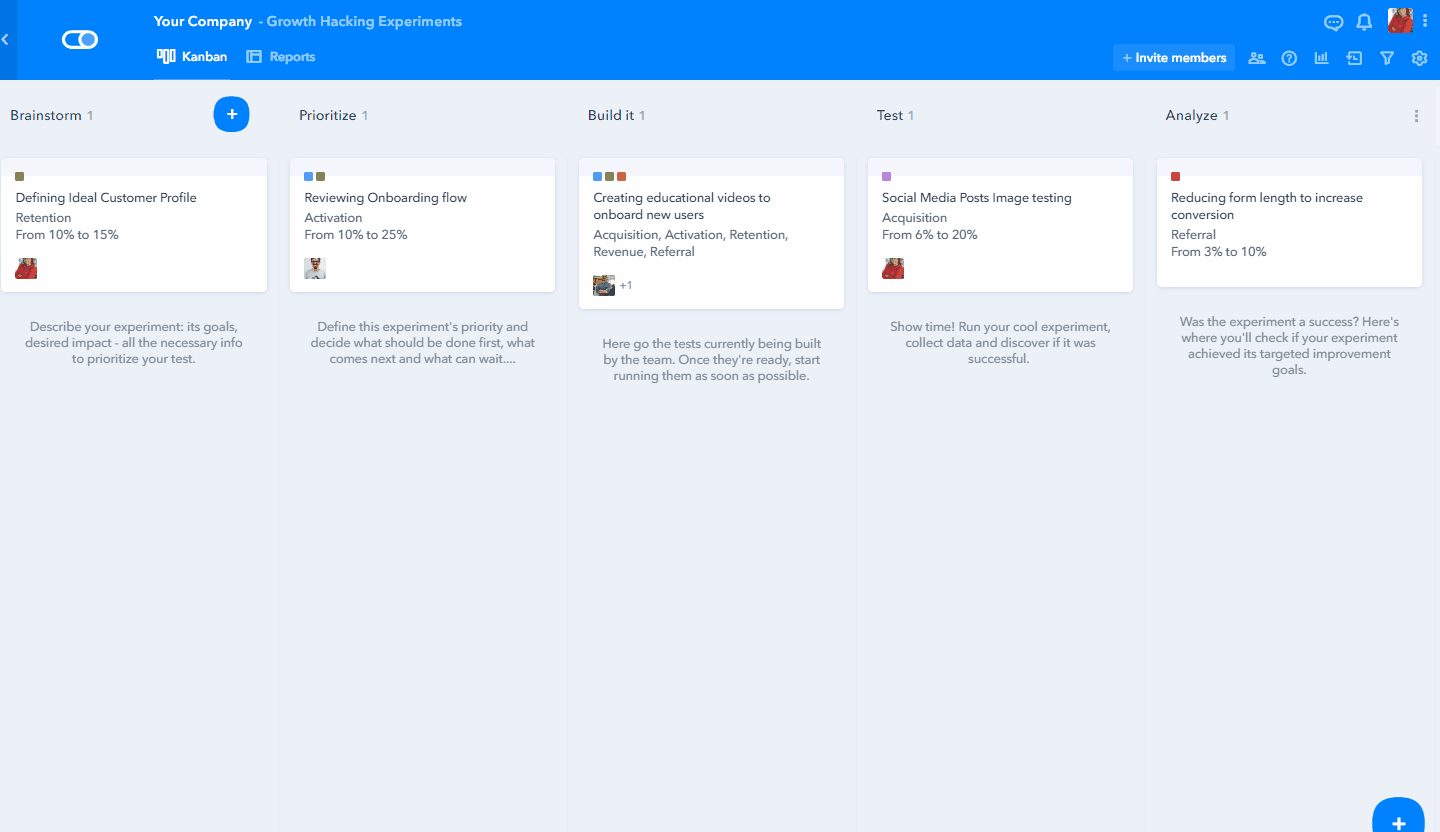ARTICLE SUMMARY
We’re past the point where dealing with intricate marketing plans and complex campaigns is considered an ideal strategy to achieve scalable growth.

We’re past the point where dealing with intricate marketing plans and complex campaigns is considered an ideal strategy to achieve scalable growth.
Developing projects to increase your customer base and conversion rates is undeniably useful, but often takes too long to plan and even longer to execute. There’s only so far you can go based on the raw strength of a motivated team and big dreams, especially with such busy schedules and tight deadlines.
Eventually, yours and your colleagues’ manual and technical work will not be enough to push through your revenue goals: as you grow, you’ll have access to all kinds of tools, and much of that work will surely be automated.
So, what now? All the hard work that brought you here will now bring you to one of the most ruthless, yet crucial, truths in the journey to build something that matters: what you’ve always been doing will never bring you to your next breakthrough (ever!).
Start right where you are
You’ve encountered a crossroads: being in desperate need of a change, but not having a clear picture as where to focus all your (newfound) time and energy.
Your customers’ purchase decision was only the beginning. You need innovation to happen fast, so momentum is not lost and you don’t end up seeing your customer acquisition rates decreasing because someone else’s product was better at solving problems than yours.
In this case, you have two options: A. You can keep on hiring more people and relying on everyone’s optimism to keep them up and running with the ever-so-demanding new goals. Or B. You can start trusting your best asset instead of relying on raw effort alone: your ideas.
Growth hacking – what and why?
The first thing to get out of the way is the ability to increase growth rates does not necessarily mean you are scaling your business scale. To scale up you need to be on the lookout for the next big thing, constantly looking for ways to make your business more profitable and efficient with what you have.
But beware! Even though rushed ideas can impact some of your rates and make it look like changes for the better are on the way, that’s not what scalable growth is about. If you’re not able to turn those ideas into a structured hypothesis and quickly validate them before the deploy, having success will be a once in a while thing, instead of a constant business advantage.
Growth hacking comes in to help you with that! We can define it as the process of standardizing experimentation across multiple marketing channels as the only way of testing hypothesis before implementing them. It’s about aggregating value to your customers while having the potential of adding revenue at the same time.
A Growth Hacker knows that the only ideas worthy of being executed are the ones that have proved themselves as indicators of helping the business achieve its main goal: growth – scalable and sustainable growth.
Growth hacking for hypothesis validation: 5 steps
1. Brainstorm
We all know how dangerous it is to build things on top of a lot of unanswered questions: it increases unnecessary risks and makes the team feel uneasy as to why we’re moving forward with something that does not resonate with everyone. Asking a lot of questions is a great way to make sure everyone feels heard and part of whatever it is you’re thinking about building together to accelerate growth.
But too much noise might make it difficult to focus and select the best assumptions to feed your Growth Hacking process. So to make sure we’re creating possible solutions to the right problems, it’s important to ask:
- What is your idea? It can be the redesign of landing pages, a new approach to the way you write your blog posts or new ads to selected social media channels. It’s preferably something quick and simple. Make sure it’s catchy so everyone is on the same page.
- Where does it have an impact? It’s important to outline the expectations you have for the hypothesis and possible experiment. Will it improve the acquisition rates? Will your activation journey become smoother? There are many possibilities, but you must choose which you want to attack first, one step at a time.
- What would be the first description of the experiment and its hypothesis? You’ll have the time to dive deeper into the heavy details later on, but you need to have clear guidelines as to how the experiment should happen and what potential gains you are hoping to achieve.
As soon as you have all of that drafted out, the first part of your brainstorm is done. The next part is making sure the concept of “success” is the same for everyone to avoid misunderstandings.
- What will be your success metrics? Will it be the number of visits? Will it be the sign-up conversion rates or your churn rate? It needs to be something you’ve been measuring and have some data on.
- What is your goal? Are you growing from your current 10% Conversion Rate to a 13% one? Are you trying to get your annual Contract Value to $500?
- What will be your impact? How will it affect your user base? Will it be a change so large you’ll need to get your support team ready, or will it be expected to have subtle repercussions?
- How much effort will it take? A small amount? Will it have a large impact on everyone’s availability? Will there need to be changes made in the current responsibilities of each person involved to guarantee the experiment will be concluded if prioritized?
- How will you measure results?? You should describe how you plan to run the tests and measure the results, so that this hypothesis follows through the entire Growth Hacking process.
2. Prioritize
Once you have gathered all the information you’d need to make smart decisions about the hypothesis, to move forward to the testing phase you need to learn how to prioritize opportunities to get maximum results. There are many methodologies that can give you a good framework as to how to prioritize ideas, but one we’re particularly fond of if the PIE one. It’s quite easy to apply and it gives you a straightforward answer to “should I be investing my team’s time and effort to make something out of this possibility?”
- What is the potential for improvement?
- How valuable is this improvement?
- How complicated will the implementation be?
After having scored all of those questions from 0 to 10, you’ll have your overall PIE score and it’s up to you and your team to specify a limit as to the minimum score a hypothesis needs to have to move forward through the Growth Hacking process.
3. Build
Congratulations, you’ve made it! Now you have the first few assumptions that proved worthy of being tested and analyzed. With all of those details in line, it’s time to select the person or the team that will be assigned to turning this into the real thing!
It’s crucial to consider all of the details you have built so far to bring together a team that will have the right set of skills and experience to work on this. Once you have selected the people that will be responsible for making this come to life in a controlled environment, they need to take the liberty to constantly take notes and report everything going on: the actions that will be taken, the things that worked and more importantly, the things that did not.
The first experiments will be rough: you’re not yet used to following this process, so registering everything that happens will be useful in the future to help you and your colleagues approach what might be the same difficulties in a more prepared fashion, reducing friction and the lead time of this phase.
4. Test
With everything built, you should create a follow-up system to make sure everyone involved in the process is doing regular check-ups on how the tests are going and what’s happening: are changes being noticed? Are people outside the team testing this hypothesis comfortable with how everything is proceeding?
5. Analyze
Now it’s time to make more questions – harder questions, this time. What was your improvement rate? Did you observe a positive change in your baseline metrics? Did the experiment achieve its goals?
No matter which conclusion you come to by the end of your analysis phase, describing the experiment’s outcome is key to ensuring you’ll be making the right choices. How close to your initial hypothesis did the experiment perform? Was the outcome expected, or were there things that happened that were beyond your initial assumptions? Why did you get the results that you did?
While taking the time to answer these questions, you’ll end up taking away a lot from the experience. Your hits and misses will shed light on new ideas that might become another hypothesis that will fill in your Growth Hacking flow and ignite new experiments.
Let’s make great things together
Now you’re a growth hacker! It seems complicated at first, but in time, you’ll smoothly execute this process – your innovation flow will boost your business’s success. Pipefy is here to help you through this journey!
Everything you learned here is structured in our Growth Hacking Template so you can start brainstorming, prioritizing, building, testing and analyzing right now! We can’t wait to see you deploying more successful experiments and achieving scalable growth.











